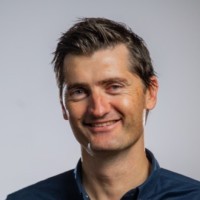- Video Library
- Peter Vranes, Nutromics - Continuous Diagnotic Monitoring | LSI Europe '22
Peter Vranes, Nutromics - Continuous Diagnotic Monitoring | LSI Europe '22

Peter Vranes
Peter Vranes is a Chemical Engineer and serial entrepreneur. Peter is the co-founder of Nutromics, an Australian MedTech company revolutionising healthcare through continuous real time molecular monitoring. The company’s innovative Smart Patch biosensor platform will solve some of the biggest healthcare challenges we face today in the fields of chronic disease prevention, chronic disease management, acute diseases and Therapeutic Drug Monitoring.
Prior to Nutromics, Peter founded Biocore Technologies and lead the team with the development and commercialisation of several natural cosmeceutical skincare brands that were distributed in 1,500 retailers throughout Australia. The company was successfully sold in 2013.
Peter Vranes
Peter Vranes is a Chemical Engineer and serial entrepreneur. Peter is the co-founder of Nutromics, an Australian MedTech company revolutionising healthcare through continuous real time molecular monitoring. The company’s innovative Smart Patch biosensor platform will solve some of the biggest healthcare challenges we face today in the fields of chronic disease prevention, chronic disease management, acute diseases and Therapeutic Drug Monitoring.
Prior to Nutromics, Peter founded Biocore Technologies and lead the team with the development and commercialisation of several natural cosmeceutical skincare brands that were distributed in 1,500 retailers throughout Australia. The company was successfully sold in 2013.

17011 Beach Blvd, Suite 500 Huntington Beach, CA 92647
714-847-3540© 2025 Life Science Intelligence, Inc., All Rights Reserved. | Privacy Policy







